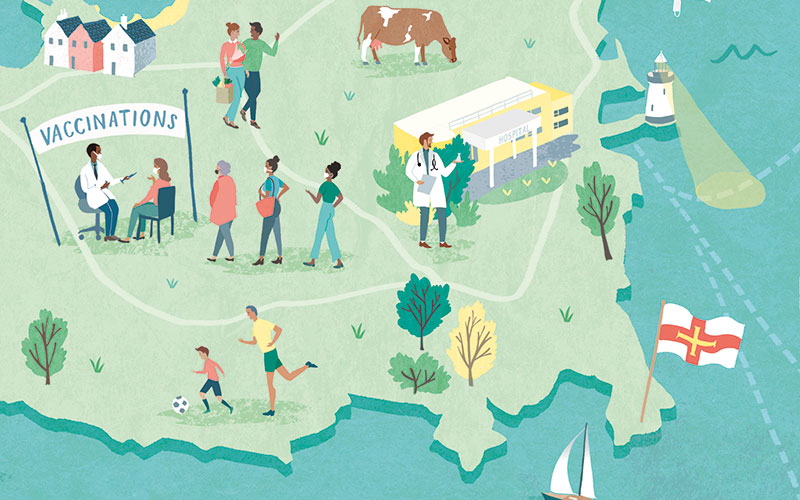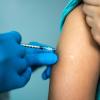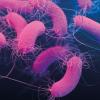Without a single case of COVID-19, Guernsey left lockdown in March. Healthcare Scientist Assistant Zoe Andrews explains what life inside and outside the lab has been like on the island. We then hear from four experts on what the future could hold when the UK exits lockdown.

Guernsey is one of the Channel Islands situated in the English Channel. It also consists of Alderney, Sark, Herm, Berqou, and Lihou island; collectively, these form The Bailiwick of Guernsey. Guernsey spent just 88 days in a strict first lockdown from March 2020. The only other time Guernsey would have felt as restricted was in WW2 when the German forces occupied the island.
Because Guernsey is a small island it has a good community spirit and throughout lockdowns the slogan #GuernseyTogether became the paradigm. Many people who were unable to work volunteered to provide prescription runs and shopping drop-offs for vulnerable and isolated people.
The community spirit and drive to keep islanders safe has helped Guernsey to exit lockdowns swiftly. Weekly press conferences with open questions from the public to politicians and public health officials meant that the public had faith in the decision-making process and probably felt like a part of that. Transparency has played a role in adherence to the rules and the fact that our Director of Public Health, Dr Nicola Brink, is a Consultant Virologist probably helped.
The colossal task in the first lockdown for our department heads was procuring the right analyser, in the right timeframe and then implementing on-island PCR testing. For the first few weeks we were packaging and sending our COVID samples to Public Health England laboratories. We knew this wasn’t sustainable. We also had to convert and build a whole new enhanced Containment Level 2 room with a Class 1 cabinet to accommodate the unprecedented workload. At this point, we only had six members of staff in our microbiology team (four of which were part-time).
We were joined on some shifts by two of our colleagues from the States of Guernsey analytical laboratory. They were trained in our COVID lab and provided regular shift cover. By June, we had Jeffrey, a locum scientist who joined us from the UK, in routine microbiology as we still had a vacant position unfilled. By the end of September for three months we were joined by Shirley, our other locum.
Our achievement of getting full PCR testing up and running on the island by 28 March 2020 was outstanding, and having an understanding management team was helpful.
The second lockdown
On 23 January 2021, Guernsey’s second lockdown was announced. There was no time to prepare – the press conference stated the lockdown was immediate. We had community seeding and no known source of transmission. By now, Shirley had left to work on the Shetland Islands.
As a community, we knew what to expect and we adhered to the rules. Guernsey has a small population of around 63,000 and the Princess Elizabeth Hospital is the only hospital on this island. We have a small hospital on the island of Alderney and, in emergencies, patients are transferred to Guernsey via air or sea.
To say it has been hard in the laboratory would be a slight understatement. Being an island, we cannot draft in scientists and healthcare staff quickly due to border restrictions. So with a team of 10 (two drafted in from our analytical lab) plus our routine microbiology work, we started our extensive screening again. The hours were long. The days merged into one another. We often forgot what day it was.
Our small COVID lab has processed and tested around 58,833 samples from 1 January to 7 April this year. From 28 March 2020 until mid-April 2021, our laboratory processed and tested around 90,000 (more than our entire population) samples.
The learning process has been fast and difficult. The hardest part has been juggling my children and trying to facilitate their home learning with my eldest in his GCSE year, whilst working full-time hours, and more.
Lifting restrictions
Working with the public health resulting teams and our swabbing teams we’ve formed new strong working relationships and know how each other function. This helps logistically and planning-wise as we know roughly when we’re expecting our workload. In November I visited the airport to witness the passenger screening process and see how Guernsey’s travel tracker and border controls functioned before the second lockdown. When we have an idea of how the other teams function, we can all learn from each other and work in as streamlined a way as possible.
Multi-disciplinary practice is essential to island-hospital life. In microbiology we run the faecal immunological testing (FIT) testing and one of the downsides to lockdowns has been the effect of stopping routine screening programmes, such as bowel screening FIT. The effects of which may not be seen for years. The decline in our FIT programme in the 2020 lockdown was a drop of 75% versus 2019. In this year’s lockdown there has been a decline of 49% versus 2019 figures.
Since the restrictions were lifted on 22 March some people still seem conscious of social distancing. However, life is back to normal, with no masks, although everyone respects if people want to wear them. The only evidence of COVID-19 having been here are the space markings on shop floors and alcohol gel in shop entrances. Tight border restrictions are still in place and 14-day quarantine is required for arrivals. The border agency does visit your given address. Guernsey means business.
Life in the laboratory is also starting to resemble normality, albeit a new normal. Our routine workload seems increased; whether this is because people have put off visiting doctors in lockdown or a new form of health anxiety due to COVID, we don’t know.
Life outside of the lab is starting to look normal, too. There wasn’t a massive build-up to exit lockdown. It felt different this time – more of an acceptance of a day at a time. I guess this was partly due to how lucky we were last time and having a restriction-free few months in 2020.
Looking to the future, I miss my UK family, friends, and travel; however, I wouldn’t change where we were throughout this pandemic – not only from a safety point of view, but a complete once-in-a-lifetime learning perspective and a community feel that’s a one in a million.
We asked four experts what the future holds for pandemic-related issues. Here’s what they said...
Face coverings and social distancing
Helene-Mari van der Westhuizen, Doctoral Researcher at the University of Oxford
COVID-19 has triggered scientific scrutiny of previously niche topics. Under this gaze, in the field of infection control, some of the old dogmas have had to be revised. At the start of the pandemic, SARS-CoV-2 was categorised as spreading via droplets and close contact. This led to policies that focused on keeping a physical distance from people outside of your household and frequent cleaning of hands. Later, face coverings to capture larger respiratory droplets of people potentially infected with COVID-19 were added. All of these remain important. However, airborne transmission has been acknowledged as an additional mode of contagion, while transmission through surfaces has been downgraded to “unlikely”.
As the UK exits lockdown, this should trigger a greater emphasis on improving ventilation in shared indoor settings. Here, mobile carbon dioxide monitors can be valuable tools in measuring and advocating for improved ventilation. Getting adequate ventilation right is important: large amounts of money and energy have been wasted on ineffective infection control measures, such as deep cleaning businesses, temperature screening, setting up Perspex screens and placing objects in quarantine. These ineffectual measures may have come at the cost of interventions that could have curbed the spread of the virus – and saved lives.
There has been progress in establishing the most effective infection control guidelines - “hands, face, space, and fresh air”. Shifting from establishing evidence for guidelines and moving towards implementation has not always been smooth. Face coverings have provoked a particularly polarising reaction. This demonstrated how infection control measures such as face coverings are also a social practice – informed by norms and expectations – in addition to guidelines. In time, it will be interesting to see which components will remain embedded in our daily lives, when guidelines for COVID-19 become less relevant. It may be more commonplace and accepted to wear a face covering on a crowded tube or during flu season. For now, we need to use our full, most effective preventative toolkit to help us get there.
Lockdowns
Sarah Pitt, Principal Lecturer, School of Pharmacy and Biomolecular Sciences, Brighton University
Since the beginning of 2020, people in most countries across the world have experienced some form of COVID-19 “lockdown”. SARS-CoV-2 is a very infectious, airborne virus. So reducing the amount of contact people have with each other through lockdowns is a very effective public health measure. Governments have implemented various levels of stringency, ranging from being legally enforced to stay in the house or a hotel, through to being advised to stay indoors. Most European countries have been in a situation where hospitality, leisure centres and non-essential shops have been closed more than once during the COVID-19 pandemic.
The development of effective vaccines in less than 12 months has been an amazing international scientific achievement. Vaccines are being produced in Europe, the US, Russia and China and distributed around the world, in a major feat of logistics. This gives us hope that the pandemic can eventually be brought under control. However, it is unlikely to eliminate SARS-CoV-2 altogether without other control measures remaining in place. Also, until everyone across the globe has been fully vaccinated, there will be a possibility that outbreaks of COVID-19 could occur anywhere. Continued transmission of the virus provides the opportunity for new variants to arise, which, as well as being spread very easily, may evade vaccine-induced immunity.
With effective public health surveillance, cases could be identified quickly and then the idea would be to limit the spread of any outbreaks. The most effective way of doing this would be rapid and drastic local lockdowns, possibility with ring booster vaccinations in the immediate area.
Hopefully, the world will learn lessons from 2020 and bring the virus under control during 2021. I expect the next six to 12 months to be characterised by local or regional lockdowns, with national lockdowns less frequent.
COVID-19 vaccinations
Simon Parker, Clinical Market Manager, Roche Diagnostics Limited
Despite the enormous input and drive from government, public and industry in making the COVID-19 vaccine programme an apparent success, it is hard to believe that herd immunity will ever be fully achieved. However, new infections will probably reduce and it is likely that COVID-19 will become endemic rather than eliminated.
By mid-April more than 32 million people had received their first vaccine; more than seven million, their second. It will be interesting by the end of the year to contrast the speed and agility of this with influenza where despite best efforts vaccine uptake rarely exceeds 75% in the over 65s and frontline healthcare workers.
Determining and predicting those who are immune to reinfection and for how long protection lasts, is still a work in progress. We can identify antibodies to the nucleocapsid, quantify the anti-spike response, qualify using in vitro neutralisation and look at T cell memory, but results appear highly individualised. It looks like most people will have some protection after infection but a proportion will not, which is why vaccination is essential. The evidence for longevity of the immune response only stretches to the start of the pandemic, but with some vaccine manufacturers already promoting a yearly booster it looks like vaccination is here to stay.
The emergence of variants of concern means manufacturers will need to plan future formulations carefully. I hope that the frequency of emerging variants reduces over time, but my money is on a regular booster, decided and delivered akin to the influenza programme.
Aside from the practicality and expense, a key issue is whether the public will tolerate annual boosters or will the government opt for pre-screening or re-vaccinate at-risk groups only? Manufacturers are developing novel influenza vaccines using the same technology as for COVID-19. I think for now we are looking at two separate annual jabs, but it would be tempting to look at the possibility of adding a COVID-19 variant to the quadrivalent Flu A and B cocktail. This might have to wait for mRNA flu vaccines to be developed from their egg-based counterparts. As if life was not complicated enough.
Clearing the NHS backlog
Allan Wilson, Lead Biomedical Scientist in Cellular Pathology and Advanced Practitioner in Cervical Cytology, Monklands Hospital
As we ease out of COVID-19 restrictions, laboratories must work with local clinicians to ensure that laboratories are not overwhelmed with samples generated by additional clinical activity targeted to catch up with the backlog of clinical procedures. This is particularly relevant for histopathology, where there is a significant risk that already stretched labs will be unable to deal with a significant bulge in workload generated from additional activity to deal with long waiting lists. The risk is that we simply move the backlog in the treatment pathways from the surgical procedures to the histopathology lab, where they will sit as a backlog of blocks awaiting microtomy or slides awaiting reporting.
Laboratory managers should be engaging with clinicians and should have input to the pace of return and clearly indicate what capacity exists within the lab and what additional resources (if they can be sourced) are required to process and report the resultant bulge in workload. Ideally, this discussion should start as early as possible and pathology representation from the outset on the various local groups managing the return of normal services is key to ensuring that any additional clinical activity is matched with additional laboratory capacity. If your lab does not have representation on these groups, I strongly urge you to contact the lead clinicians and request representation.
The pause in clinical services should lead to a revision of clinical practice to ensure that before services simply return to “business as usual” clinicians are confident of the clinical value of the procedures and the treatment pathways are still valid. This has already started; for example, endoscopy protocols have been reviewed and less invasive procedures have been introduced to reduce endoscopy activity and endoscopic biopsy numbers. Laboratories have an important role in auditing the outcomes from clinical procedures and engaging with their clinical users where they consider the samples they are processing could be of limited clinical value. Laboratories are in a unique position to analyse the data across all users to provide an oversight of the efficacy of samples sent for processing.
It is vital that laboratories engage with the wider clinical community to ensure they are able to manage forecast bulges in activity and, where appropriate, challenge what “normal” should look like. We must take this opportunity to challenge the norm and base, but our findings must be based on robust audits.
Click here to hear Zoe Andrews and Helene-Mari van der Westhuizen talking about facemasks and lifting lockdown on the latest IBMSpod.




